In this article, I will provide you with essential tips and guidance on how to care for your Anthurium Warocqueanum, a rare and exquisite tropical plant. Whether you’re a plant enthusiast or new to indoor gardening, these tips will help you nurture your Anthurium Warocqueanum and create a stunning tropical addition to your home.
Key Takeaways:
- Anthurium Warocqueanum is a rare and exotic plant species that can thrive indoors.
- Proper lighting, humidity, and watering are essential for its care.
- Choose a well-draining soil mix and fertilise regularly during the growing season.
- Regular pruning and maintenance will help keep your Anthurium Warocqueanum healthy and beautiful.
- Propagate through division or stem cuttings, and repot every 1-2 years.
Overview of Anthurium Warocqueanum
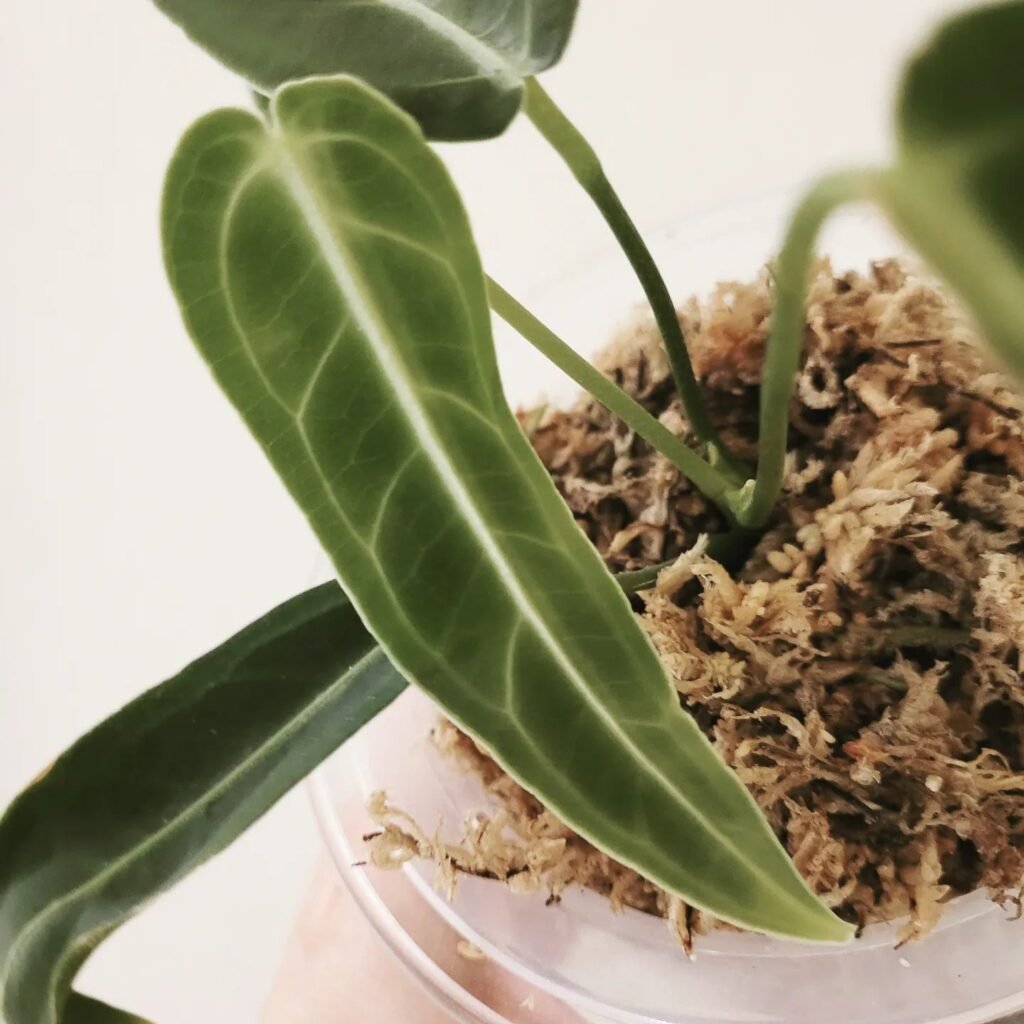

Anthurium Warocqueanum, also known as Queen Anthurium Warocqueanum, is a captivating plant species native to the rainforests of Central and South America. Its large, dark foliage and velvety leaves make it a favorite among collectors and botanical garden enthusiasts. In the wild, it thrives in shady and humid environments.
Characteristics of Anthurium Warocqueanum
| Common Name | Scientific Name | Foliage | Native Habitat |
|---|---|---|---|
| Anthurium Warocqueanum | Anthurium warocqueanum | Large, dark foliage with velvety leaves | Rainforests of Central and South America |
Anthurium Warocqueanum is highly sought after for its unique and exotic appearance. The dark, velvety leaves add a touch of elegance to any indoor space. Its native habitat in the rainforests provides the ideal growing conditions for this stunning plant.
Light Requirements for Anthurium Warocqueanum
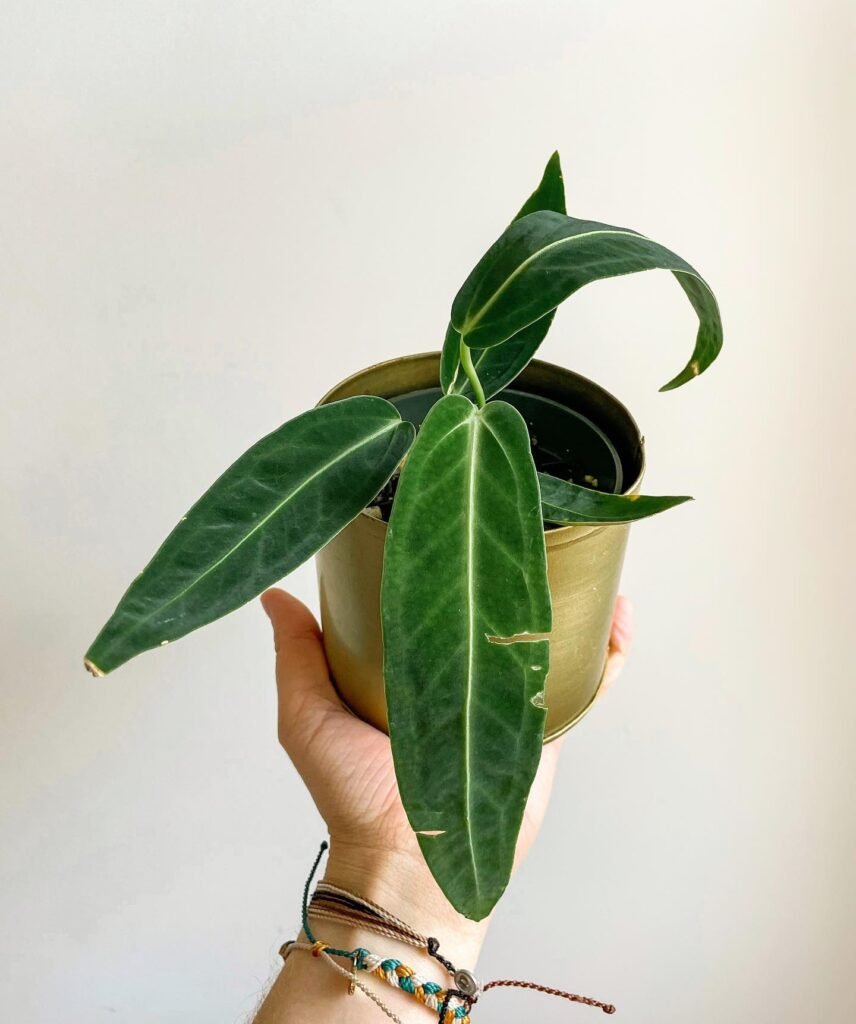
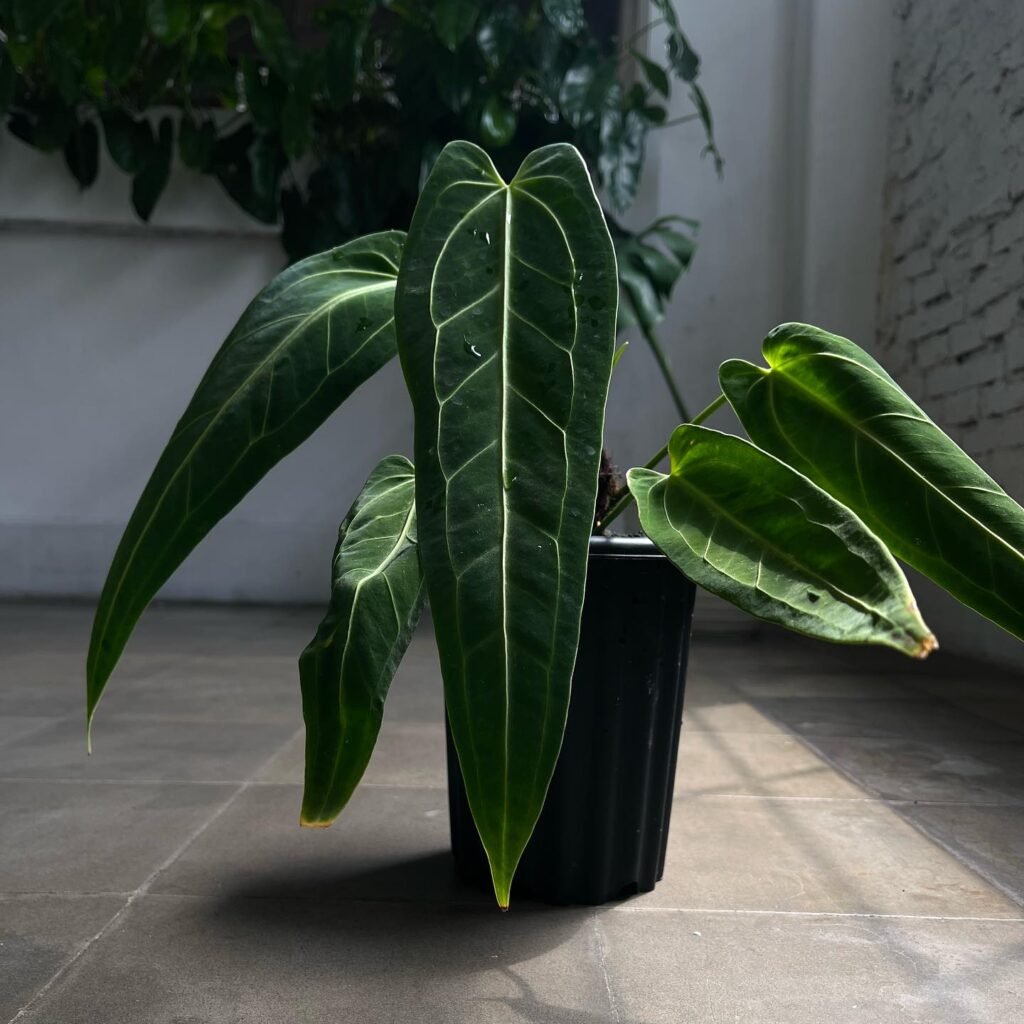
Anthurium Warocqueanum, like many tropical houseplants, thrives in bright, indirect light. To ensure your plant receives the ideal amount of light, find a location that offers filtered sunlight or place it near a window with sheer curtains. This will help protect the delicate leaves from direct sunlight, which can cause leaf burn.
In the United Kingdom, providing sufficient light for your Anthurium Warocqueanum may require additional artificial lighting, especially during the darker winter months. Consider using grow lights or other indoor lighting solutions to supplement natural light and maintain optimal conditions for your plant’s growth.

Watering Tips for Anthurium Warocqueanum

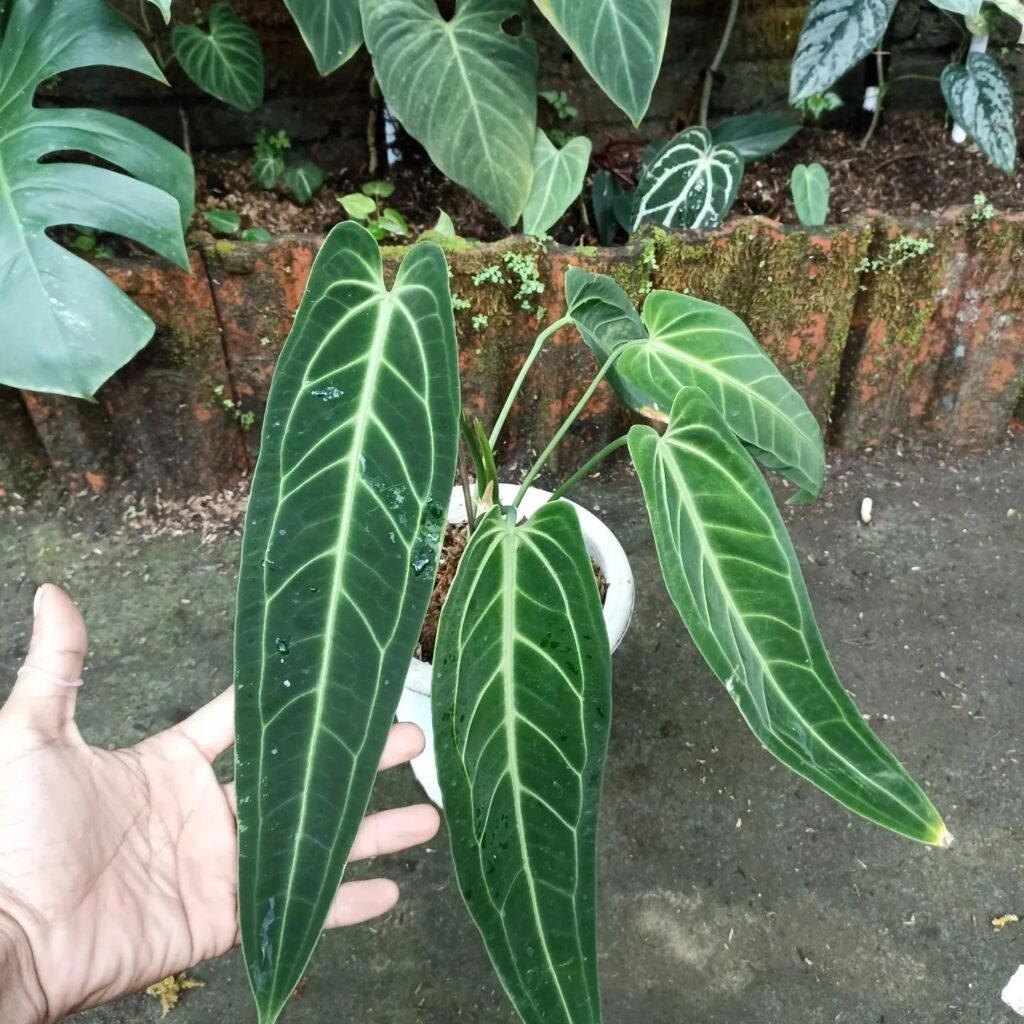
Maintaining proper humidity is crucial for Anthurium Warocqueanum. It prefers higher humidity levels, similar to its natural rainforest habitat. Consider using a humidifier or placing a tray of water near the plant to increase humidity. Anthurium Warocqueanum humidity can be maintained by misting the leaves regularly.
Water your Anthurium Warocqueanum thoroughly when the top inch of soil feels dry. Avoid overwatering, as this can lead to root rot. Ensure that the pot has drainage holes to allow excess water to escape. When watering, pour water into the pot until it starts to flow out of the drainage holes, allowing the soil to absorb moisture evenly.

Fertilizing and Soil for Anthurium Warocqueanum

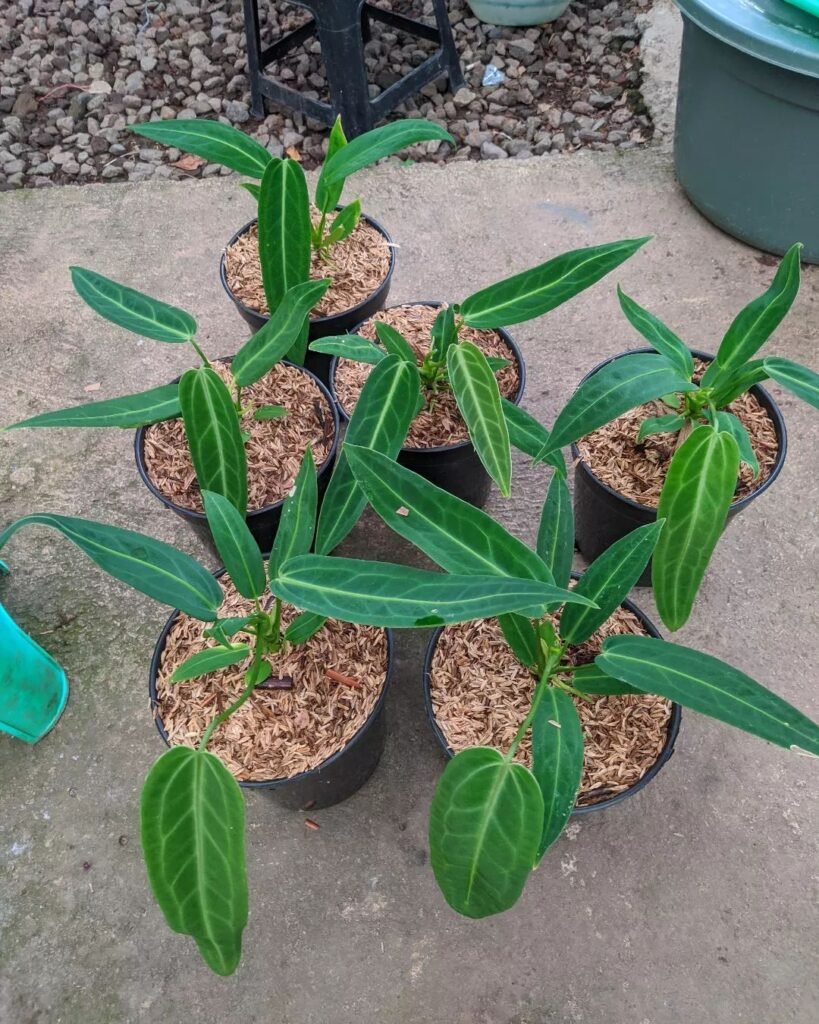
When it comes to caring for your Anthurium Warocqueanum, choosing the right soil and providing proper fertilization is crucial. These factors contribute to the overall health and growth of your plant. Here are some tips to help you create the perfect environment for your Anthurium Warocqueanum.
Choosing the Right Soil Mix
Anthurium Warocqueanum thrives in a well-draining soil mix that allows excess water to flow freely. This prevents waterlogging and helps avoid root rot. Opt for a soil mix specifically formulated for tropical houseplants. You can also create your own mix by combining:
- Peat moss
- Orchid bark
- Perlite
This combination creates a suitable growing medium that provides the right balance of moisture retention and drainage for your Anthurium Warocqueanum.
 Anthurium Warocqueanum has a fascinating growth habit; it’s an epiphyte in its natural habitat, meaning it grows on other plants for support without being parasitic. This adaptation allows it to access better light and air circulation in the dense underbrush of the Colombian rainforest, showcasing nature’s incredible adaptability.
Anthurium Warocqueanum has a fascinating growth habit; it’s an epiphyte in its natural habitat, meaning it grows on other plants for support without being parasitic. This adaptation allows it to access better light and air circulation in the dense underbrush of the Colombian rainforest, showcasing nature’s incredible adaptability.
Fertilizing Your Anthurium Warocqueanum
Fertilizing your Anthurium Warocqueanum is essential for providing the necessary nutrients for healthy growth. During the active growing season, which typically falls between spring and summer, it is recommended to fertilize your plant every two to four weeks.
Choose a balanced liquid fertilizer that is diluted to half strength to avoid over-fertilizing your Anthurium Warocqueanum. Over-fertilization can lead to nutrient burn and damage the roots of your plant. Remember, it is better to under-fertilize than to over-fertilize.
When applying fertilizer, ensure that the soil is moist, but not waterlogged. Water your Anthurium Warocqueanum thoroughly before fertilizing to prevent any potential nutrient imbalance.
During the dormant period, which occurs during the winter months, reduce or suspend fertilization as your plant’s growth slows down. Resume regular fertilization once the active growth period begins again.
By providing your Anthurium Warocqueanum with a well-draining soil mix and timely fertilization, you will create optimal conditions for its growth and overall well-being.

Pruning and Maintenance of Anthurium Warocqueanum


Regular pruning is essential for the health and appearance of your Anthurium Warocqueanum. By removing any yellowing or damaged leaves using clean, sharp scissors, you can ensure that your plant remains vibrant and free from disease. Additionally, trimming back overgrown stems will encourage bushier growth, making your Anthurium Warocqueanum even more stunning.
To keep your Anthurium Warocqueanum looking its best, it’s important to dust the leaves regularly. This helps prevent the build-up of dirt and keeps pests at bay. Simply take a soft cloth or feather duster and gently wipe away any dust that may have settled on the leaves. This simple act of maintenance goes a long way in preserving the beauty of your plant.
A well-maintained Anthurium Warocqueanum is a collector’s dream. These unique and exotic plants deserve proper care and attention to ensure their longevity. Regular pruning, trimming, and dusting will contribute to the overall health of your Anthurium Warocqueanum and keep it looking its best as a stunning addition to your indoor garden.
| Pruning and Maintenance Tips for Anthurium Warocqueanum |
|---|
| Remove any yellowing or damaged leaves |
| Trim back overgrown stems to encourage bushier growth |
| Dust the leaves regularly to keep them clean and pest-free |

Propagating Anthurium Warocqueanum
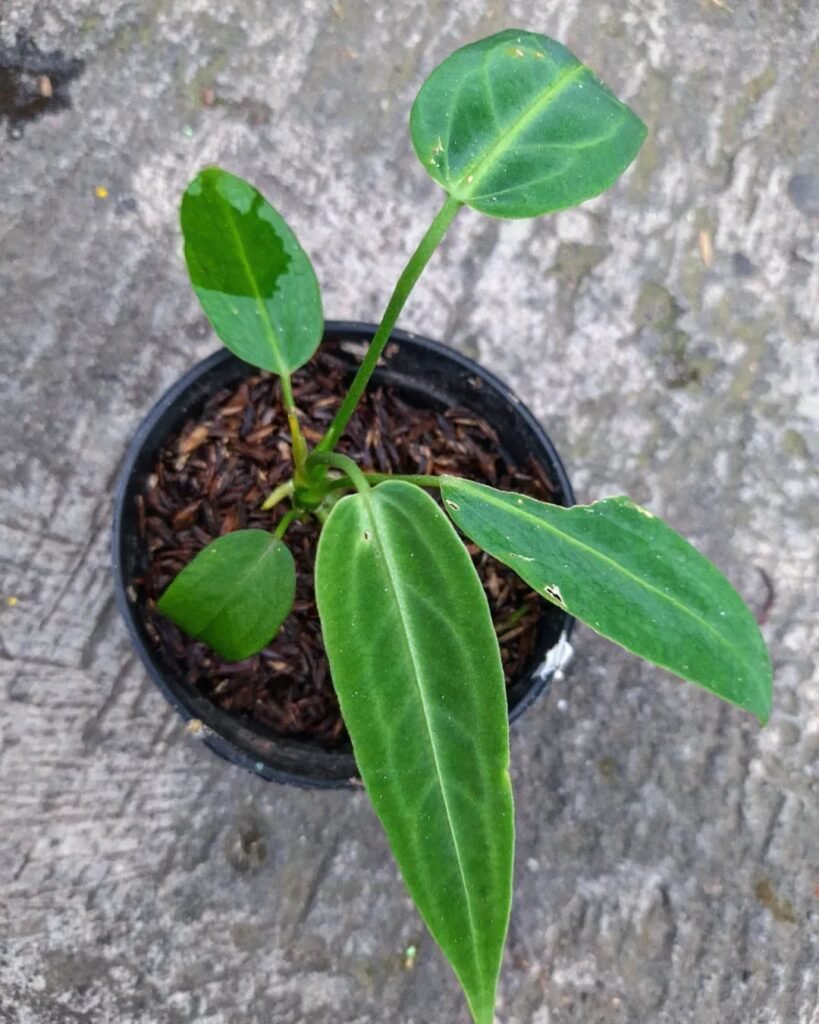

Propagating Anthurium Warocqueanum allows you to expand your collection and share the beauty of this exquisite plant with others. There are two main methods for propagating Anthurium Warocqueanum: division and stem cuttings.
To propagate through division, carefully separate healthy offshoots with their own root system from the parent plant. Gently loosen the soil around the offshoots and use a clean, sharp tool to separate them. Ensure that each division has a good portion of roots for successful growth.
Once separated, plant each division in a well-draining potting mix suited for tropical plants. Provide the same care and conditions as you would for an adult Anthurium Warocqueanum, including proper lighting and humidity.
Tip: Label each new plant with its proper name to avoid confusion when it matures.
Another method of propagation is through stem cuttings. Start by selecting a healthy stem with several leaves. Make a clean cut just below a node, ensuring that the cutting is at least 3-4 inches long.
Place the cutting in a jar of water or a well-draining rooting medium, such as a mixture of peat moss and perlite. The cutting should receive sufficient warmth and humidity to encourage root development. Maintain a humid environment by covering the cutting with a plastic bag or using a propagation dome.
Note: Mist the cutting with water periodically to keep the humidity levels high.
| Propagating Method | Advantages | Disadvantages |
|---|---|---|
| Division | – Each division is self-sufficient with its own root system | – The parent plant may take longer to recover from division |
| Stem Cuttings | – Allows for more plants to be propagated from a single parent plant | – Success rates may vary |
After root development, transplant the cutting into a pot with well-draining soil. Continue to provide the appropriate care and conditions to ensure its healthy growth.
By utilizing these propagation techniques, you can expand your Anthurium Warocqueanum collection and share the joy of this stunning plant with others.

Repotting Tips for Anthurium Warocqueanum
When it comes to caring for your precious Anthurium Warocqueanum, repotting is an important task that should not be overlooked. Repotting allows your plant to have ample space for growth and ensures optimal health. Follow these tips to ensure a successful repotting process:
1. Timing is Key
It’s generally recommended to repot your Anthurium Warocqueanum every 1-2 years or when it outgrows its current pot. Observing the current pot and checking for root crowding can give you a good indication of when repotting is necessary.
2. Choosing the Right Pot
When selecting a new pot for your Anthurium Warocqueanum, go for a size that is one size larger than its current pot. This will provide enough room for the plant’s roots to grow and prevent them from becoming compacted. Additionally, opt for a pot with adequate drainage holes to prevent waterlogging which can lead to root rot.
3. Well-Draining Soil Mix
Using a well-draining soil mix is essential to ensure proper root health for your Anthurium Warocqueanum. Consider using a mix of peat moss, orchid bark, and perlite to create an ideal growing medium. This will provide the necessary aeration and prevent the soil from becoming overly compacted.
4. Handle with Care
During the repotting process, it’s important to handle your Anthurium Warocqueanum with care to avoid damaging its delicate roots. Gently loosen the roots and remove any old or decaying parts before placing the plant in its new pot. Take your time and be patient throughout the process.
| Benefits of Repotting Anthurium Warocqueanum | Common Mistakes to Avoid |
|---|---|
| 1. Provides more space for root growth | 1. Choosing a pot that is too large, which can lead to overwatering |
| 2. Refreshes the potting medium | 2. Neglecting proper drainage in the new pot |
| 3. Allows for the removal of old, decaying roots | 3. Mishandling the plant during the repotting process |
| 4. Prevents root crowding and potential root rot | 4. Failing to loosen or untangle compacted roots |
 Anthurium Warocqueanum, often termed the ‘Queen Anthurium’, stands out for its elongated velvety leaves with striking vein patterns. Native to Colombia’s rainforests, it thrives under high humidity and filtered light, making it a prized specimen for exotic plant collectors. Its rarity and unique beauty contribute to its high demand among enthusiasts.
Anthurium Warocqueanum, often termed the ‘Queen Anthurium’, stands out for its elongated velvety leaves with striking vein patterns. Native to Colombia’s rainforests, it thrives under high humidity and filtered light, making it a prized specimen for exotic plant collectors. Its rarity and unique beauty contribute to its high demand among enthusiasts.
Helpful Videos on Caring for Anthurium Warocqueanum
Watching instructional videos can provide visual guidance on how to care for your Anthurium Warocqueanum. Check out these informative videos from experienced gardeners and plant enthusiasts to learn more about properly nurturing your plant.
- Ultimate Guide: how to grow huge Anthuriums in your home including Warocqueanum – in low humidity
- Repotting Queen Anthurium Warocqueanum – from 2 gallon to 6 gallon pot -new kind of moss pole!
- Queen Anthurium Propagation | 100% Best Method for Stem Cuttings
Frequently Asked Questions about Growing Anthurium Warocqueanum at Home

Looking after an Anthurium Warocqueanum? Here’s a handy set of questions and answers put together from experts and plant lovers. This guide is here to help you make your Anthurium Warocqueanum happy and healthy. Let’s get started on making your plant thrive.
It’s a beautiful indoor plant with long, soft leaves that feel like velvet.
Give it a drink when the top bit of soil feels dry, usually once a week.
Somewhere bright but away from direct sunlight.
It enjoys warmth, around 18°C to 25°C, and doesn’t like the cold.
Use a pot with holes in the bottom to let extra water drain out.
Yes, if it’s a grow light or a bright LED, but natural light is best.
Keep an eye out for little bugs or spots on leaves and clean them gently. If you see bugs, you might need to get a special spray.
You can split it into two when you repot it if it’s big enough.
It might be getting too much water. Try letting the soil dry out a bit more.
It’s rare indoors, but with lots of light and care, you might see a flower.
No, it’s best to keep it away from pets and kids since it can make them sick if eaten.
Check if it needs more light or water, and make sure it’s not too crowded in its pot.
Wipe them gently with a damp cloth to keep them dust-free.
Repot it every 2-3 years or when it seems too big for its current pot.
Yes, but keep it in the shade and bring it back inside when it gets cooler.
It’s possible but takes a long time. It’s easier to grow from a cutting or by dividing it.
Keeping your Anthurium Warocqueanum growing well is all about learning and trying things out. The tips here are just the beginning. Watch how your plant reacts and feel free to tweak your care routine. Happy gardening, and here’s to your Anthurium Warocqueanum looking its best!
Conclusion
By following these simple yet effective care tips, you can ensure that your Anthurium Warocqueanum thrives and brings a touch of tropical beauty to your indoor garden. Remember to provide the right lighting conditions, maintain proper humidity levels, and give your plant the necessary care and attention it deserves. With its stunning foliage and unique appearance, this rare tropical plant is sure to captivate any plant lover.
As a collector’s plant, proper maintenance is essential. Regularly prune any yellowing or damaged leaves to maintain the plant’s health and appearance. Dusting the leaves regularly will help keep them clean and free from pests. When it’s time to repot, choose a pot that provides adequate drainage and use a well-draining soil mix formulated for tropical houseplants.





